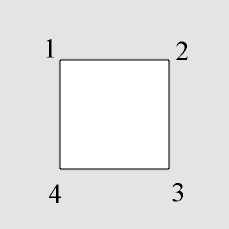
Figure 8: We denote this labeling of the square by 1234.
The group G of symmetries is a group of order 8, which we
describe by permutations of the set of vertices {1,2,3,4}. Thus
g1 (Identity) (1 2 3 4) (1 2 3 4)
(cycle index x14 )
g2
(1 2 3 4) (2 3 4 1)
(cycle index x4 )
g3
(1 2 3 4) (3 4 1 2)
(cycle index x22 )
g4
(1 2 3 4) (4 1 2 3)
(cycle index x4 )
g5
(1 2 3 4) (3 2 1 4)
(cycle index x12x2 )
g6
(1 2 3 4) (1 4 3 2)
(cycle index x12x2 )
g7
(1 2 3 4) (2 1 4 3)
(cycle index x22 )
g8
(1 2 3 4) (4 3 2 1)
(cycle index x22 )
Thus the cycle index of G is (x14+2x1
2x2+3x22+2x4)/8.
Now suppose we want to color the elements of X; that is, we have a finite
set Y of colors, |Y| = r, and a coloring of X is
a function 4 f: X ® Y.
For any g Î G, we regard the
colorings f and fg as indistinguishable or equivalent; and a
pattern is an equivalence class of colorings. Then Pólya's first theorem
is as follows.
Theorem 5.1: The number of patterns is
Z(G;r,r,...,r).
Example 5.1: (continued) Suppose the vertices are to be colored red or
blue. Then r = 2, and the number of patterns is (16+16+12+4)/8 = 6.
In fact, the patterns are represented by the 6 colorings: RRRR, BRRR, BBRR, BRBR,
RBBB, BBBB,

We now describe Pólya's second theorem. This is really the 'big' theorem
and the first theorem is, in fact, deducible from it. Let us enumerate the
elements of Y (the 'colors') as y1,y2,
...,yr.
Theorem 5.2: Evaluate Z(G;x1,x2,
...,xn) at xi = åj
= 1ryji.
Then the coefficient of y1n1y2n2
...yrnr is the number of patterns
assigning the color yj to nj elements
5.
Example 5.1: (continued) For the symmetries of the square we know that
|
Z(G) = (x14+2x1
2x2
+3x22+2x4)/8.
|
|
Thus if Y = {R,B}, then the evaluation of Z(G)
at xi = Ri+Bi yields
|
((R+B)4+2(R+B)2(R2+
B2)+3(R2+B2)2
+2(R4+B4))/8 =
|
|
|
R4 + R3B + 2R2B2
+ RB3 + B4
|
|
(It is, of course, no coincidence that this polynomial is homogeneous
(of degree |X| and symmetric. Thus the Pólya Enumeration
Theorem tells us that there is one pattern with 4 red vertices
(obvious); one pattern with 3 red vertices and 1 blue vertex,
represented by the coloring RRRB; 2 patterns with
2 red vertices and 2 blue vertices, represented by the colorings
BRRB and RBRB, and the
remaining possibilities are analyzed by considerations of symmetry.)
Now, given a pattern, there are the various functions
fg : X ® Y, where f is a fixed coloring and g
Î G, in that equivalence
class of colorings. These are the homologues, or, more precisely, the
homologues of f. Let us revert to our example.
Example 5.1: (continued) As we have seen, there is one coloring in which
all vertices are colored red. There is only one homologue, namely RRRR,

There is one coloring in which 3 vertices are colored red
and one blue. There are 4 homologues, namely BRRR, RBRR, RRBR, RRRB,

where one vertex is colored blue.
There are two colorings in which 2 vertices are colored
red and 2 blue. In the first there are 4 homologues, namely BBRR, RBBR, RRBB, BRRB,

In the second there are 2 homologues, namely BRBR, RBRB,

The analysis is completed by considerations of symmetry.
Let us show how this conception of homologues agrees with our earlier
definition. We are given the group G of permutations of X.
Given a coloring f: X ® Y, we consider the subset
G0 of G consisting of those g such that fg = f,
that is, those movements of X which preserve the coloring. It is easy to see
(just as easy as in our earlier, simpler situation) that G0 is a
subgroup of G. Corresponding to each coset G0g of
G0 in G we have a coloring fg of X and
these colorings run through the pattern determined by f. We have described
the set of colorings {fg} as the set of homologues of the coloring f;
as indicated earlier, they are in one-one correspondence with the cosets of
G0 in G.
4
We speak of a coloring of X; this may be literally true or it may merely be a
metaphor for a rule for dividing the elements of X into disjoint classes.
5
Of course åj = 1r
nj = n.